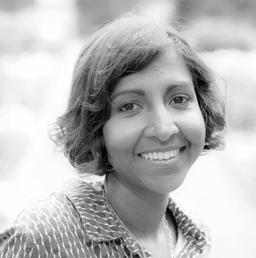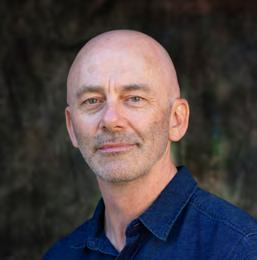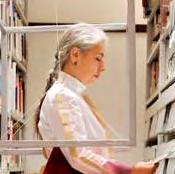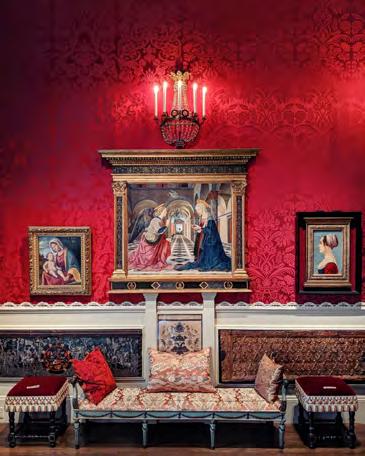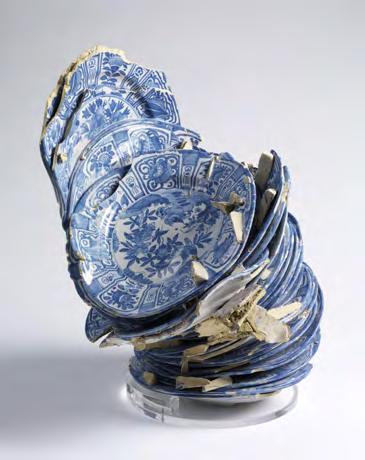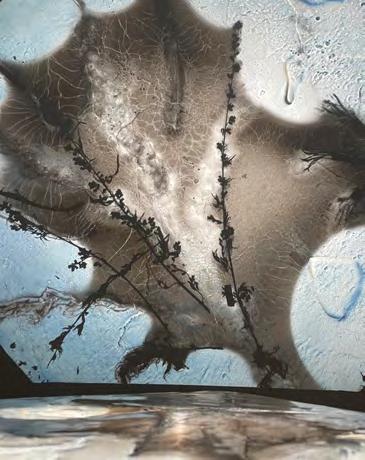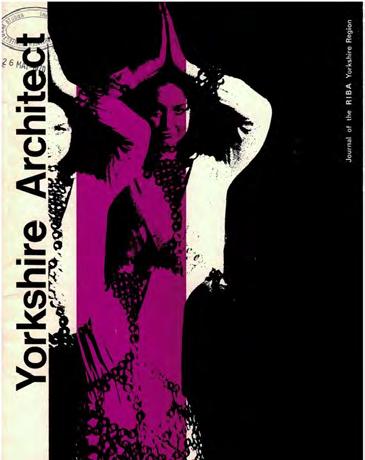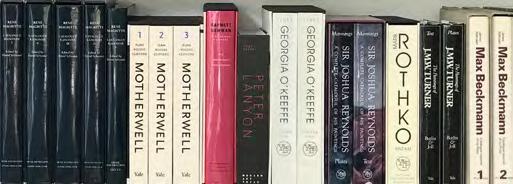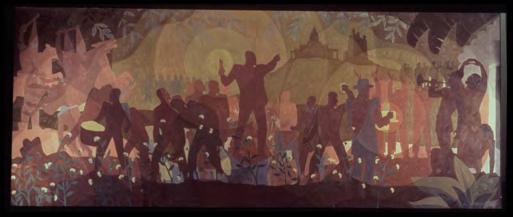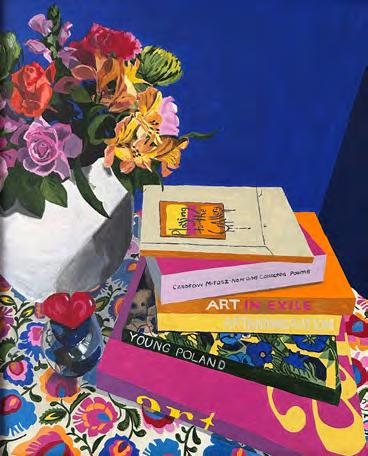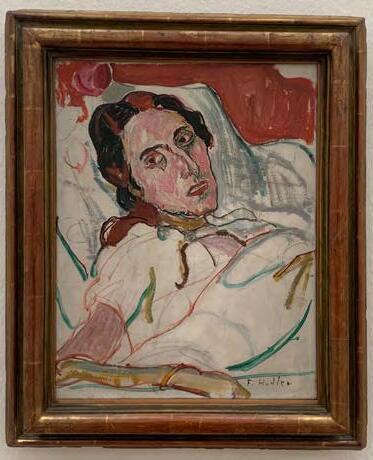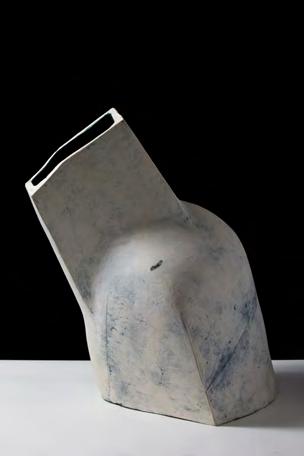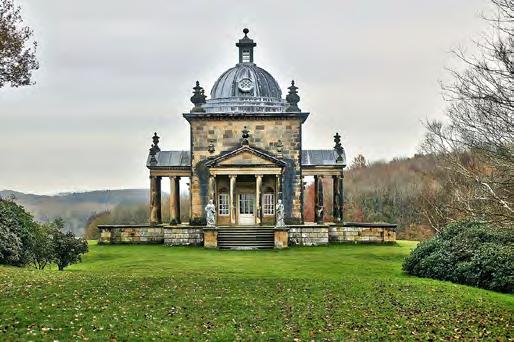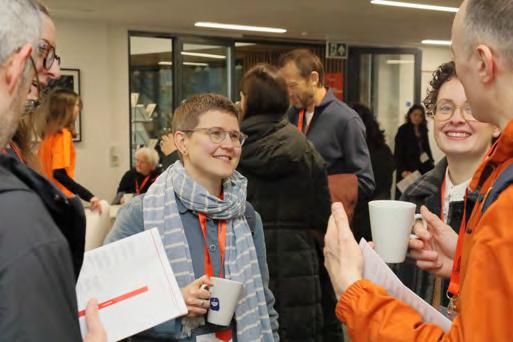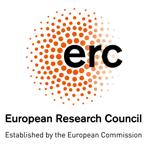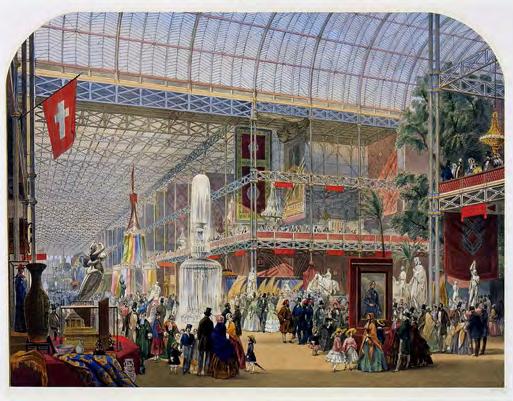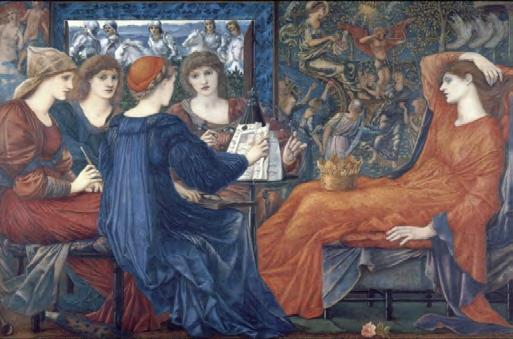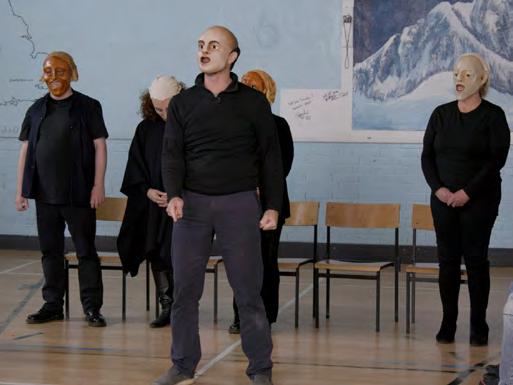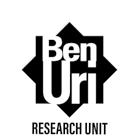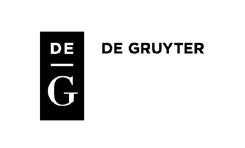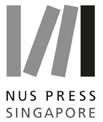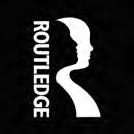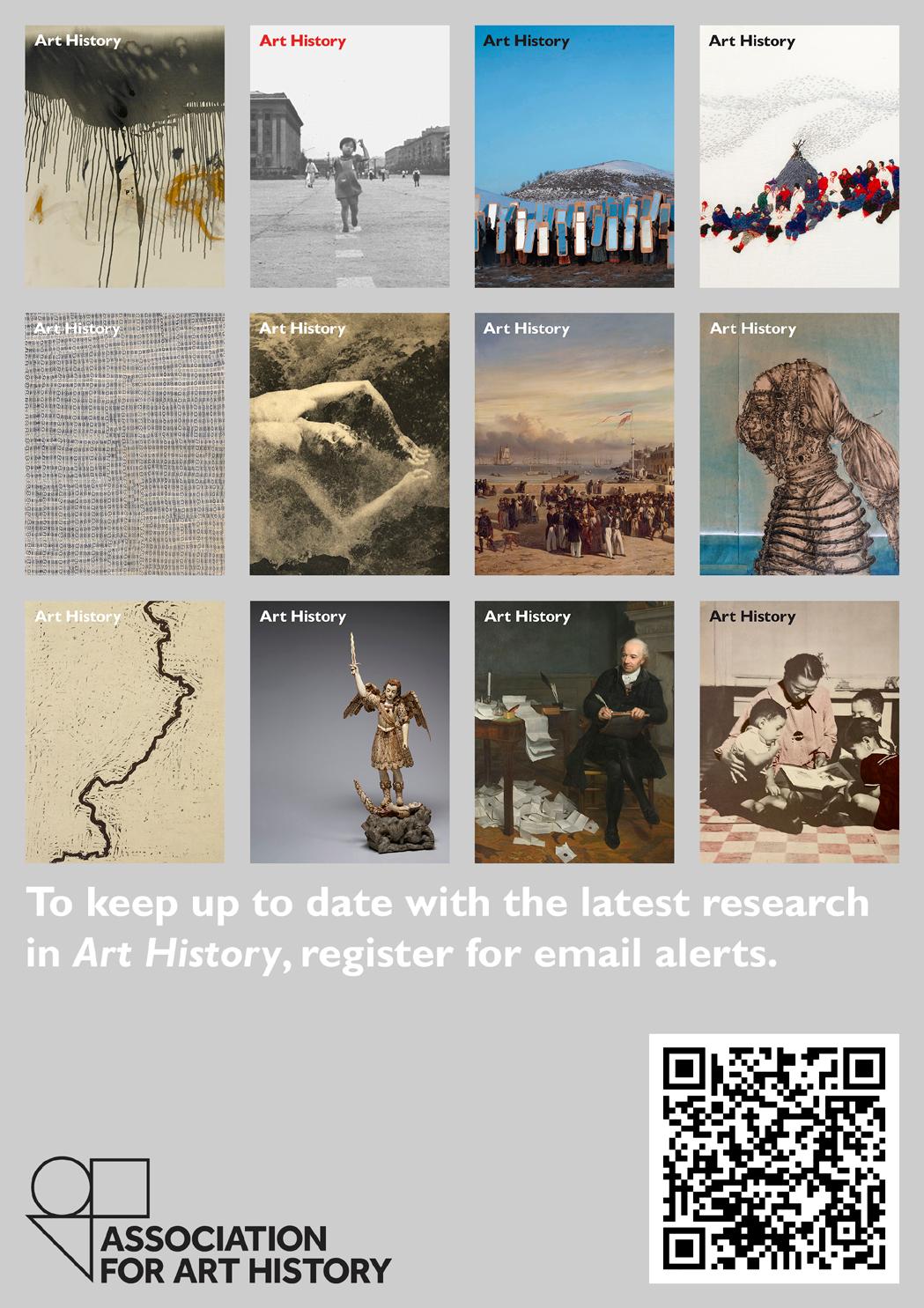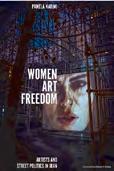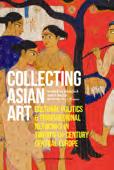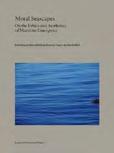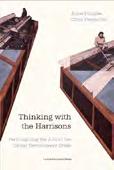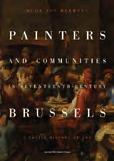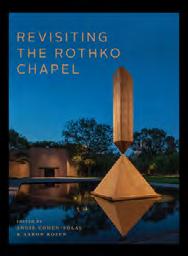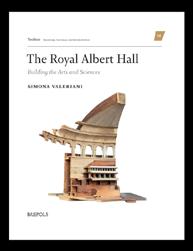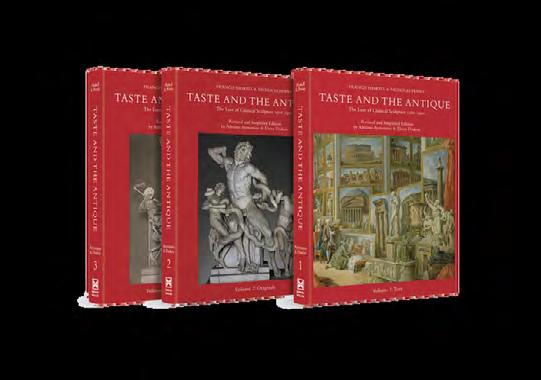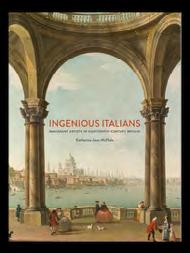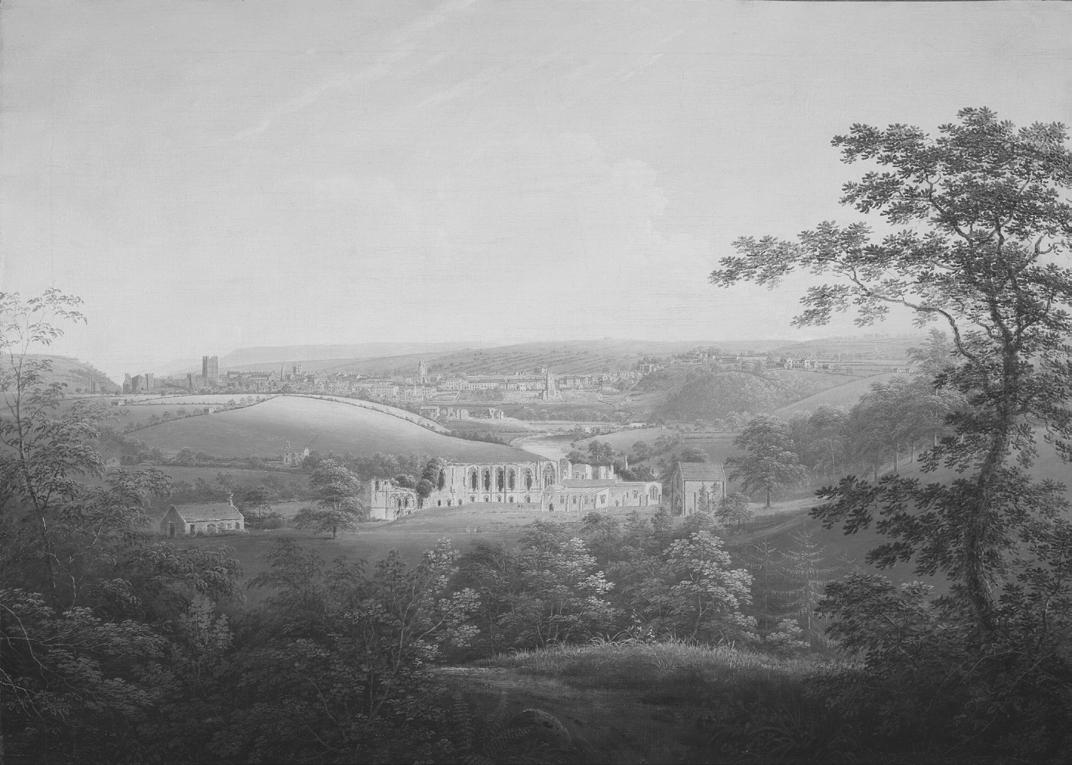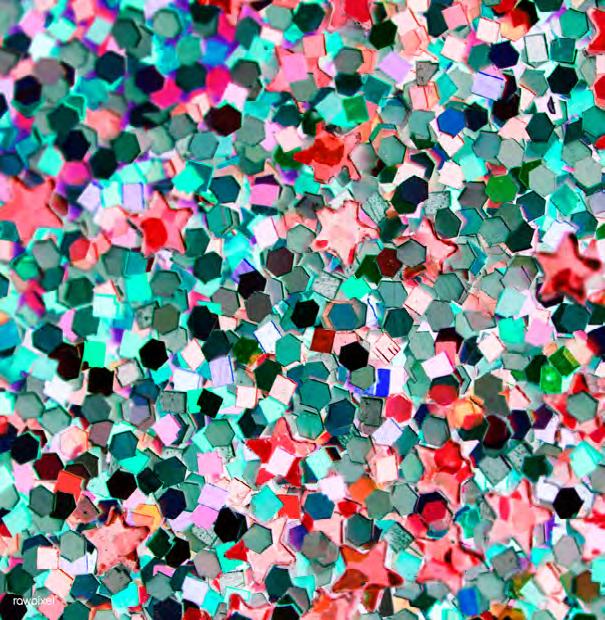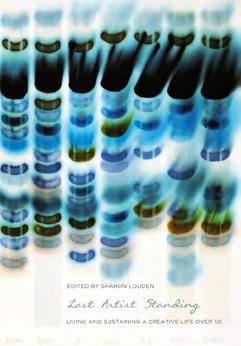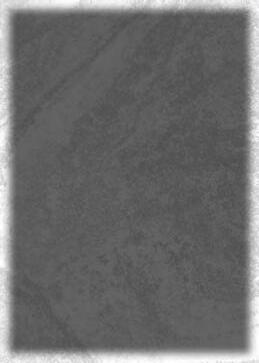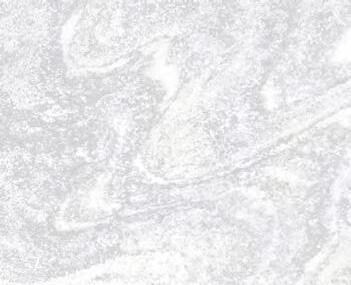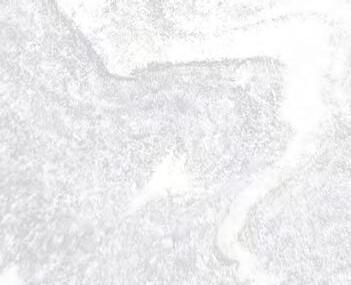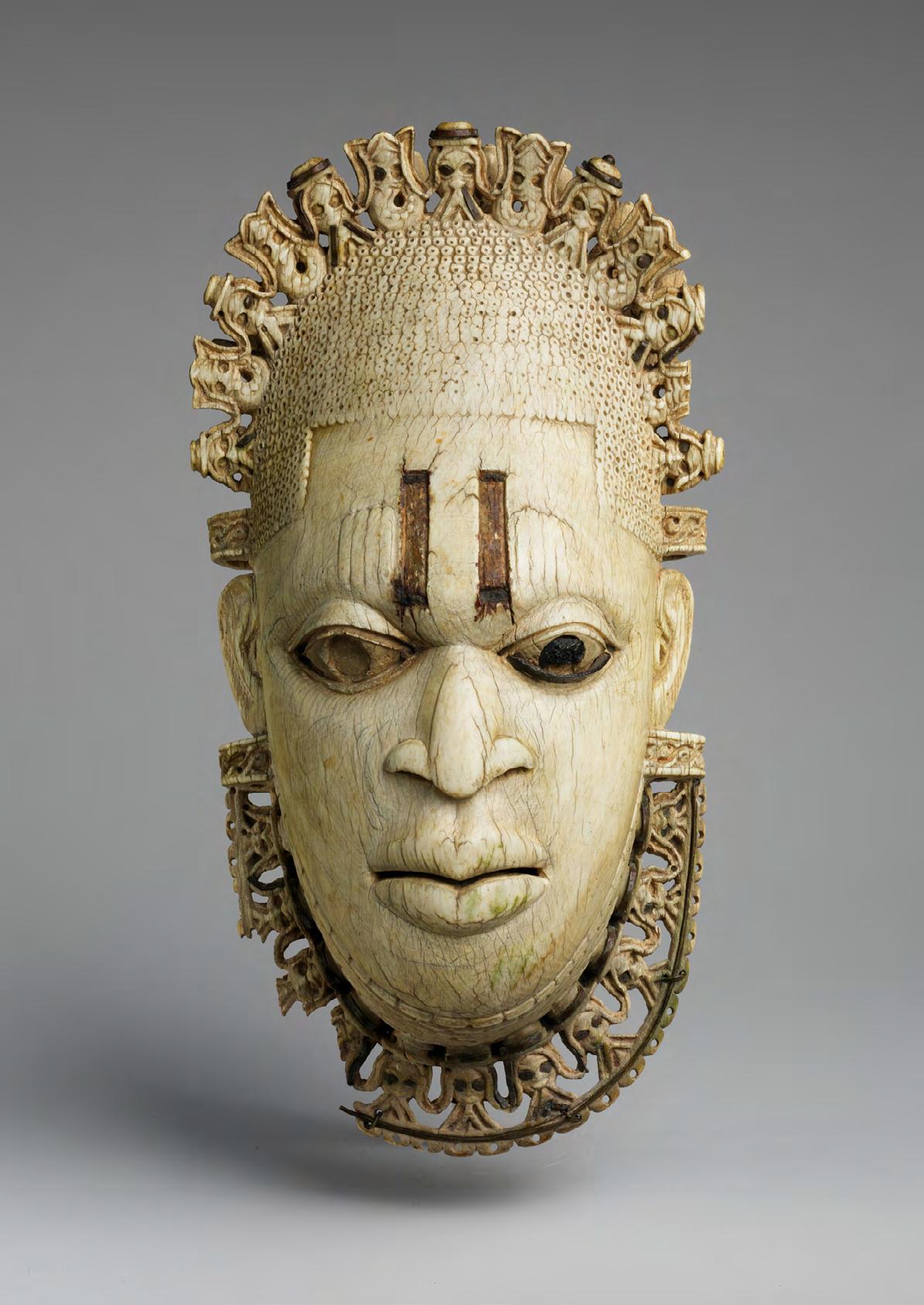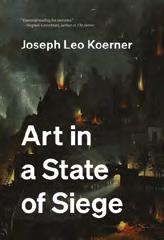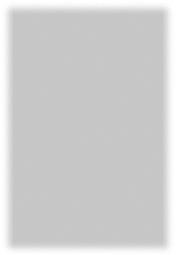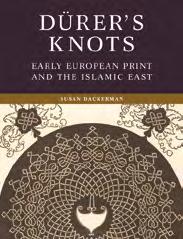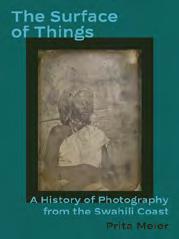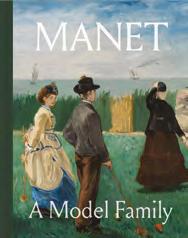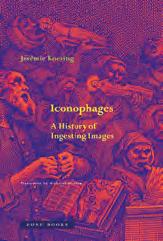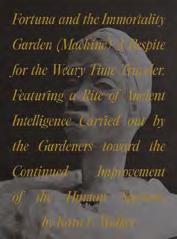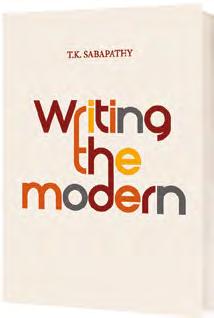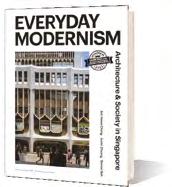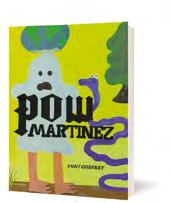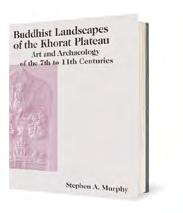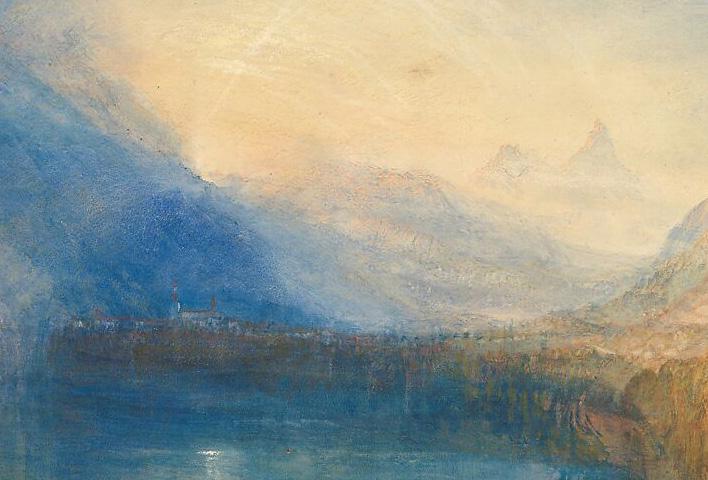TOURS AND WORKSHOPS
WORKSHOP
BRIDGING THE GAP: ACADEMICS AND CURATORS WORKING COLLABORATIVELY
Thursday 10 April
16:00-17:00 Room PL005
Collaborative projects and funded partnerships are increasing across the art history sector. How can they be set up for success? What does it take to ensure mutual benefit and shared outcomes for collaborative academic and curatorial projects?
Chaired by Michael White, this session, comprising case studies and an open panel discussion, explores how curators and academics can best work together, along with the challenges and opportunities inherent in these collaborations.
WORKSHOP
ERC: SUPPORTING YOUR RESEARCH
Thursday 10 April
16:00-17:30
Room SLB002
The European Research Council (ERC) supports excellent frontier research across all fields of scholarship. ERC calls are open to researchers from around the world who plan to carry out their research at a host institution in an EU Member State or in a country associated with the EU Framework Programme for Research and Innovation. This information session will provide an overview of ERC funding opportunities, the evaluation procedure, and general advice on preparing a proposal.
WORKSHOP DECOLONISING DESIGN HISTORIES
Thursday 10 April
16:00-17:30 Room SLB003
Join us for an interactive workshop focusing on the processes and challenges of decolonising the field of design history. Traditionally, the histories of objects and their design, manufacture, consumption, and display have been fraught with colonialist narratives around taste, value, authorship, and significance. In recent decades, these narratives have rightly come under scrutiny and critique.
Led by Sally-Anne Huxtable, London Metropolitan University, Jo Pilcher, University of Brighton, Sabrina Rahman, University of Exeter and Elli Michaela Young, Middlesex University. This Design History Society workshop will encourage reflection on decolonising approaches to researching, teaching, curating, and writing about objects.
ROUNDTABLE
PRE-RAPHAELITE NETWORKS
Thursday 10 April
16:00-17:30
Facilitated by Serena Trowbridge and Emily Learmont of the Pre-Raphaelite Society, this roundtable discussion brings together postgraduate students, curators, academics and writers at different stages of their career to discuss career development, opportunities, and ways to move from postgraduate to professional in PreRaphaelite studies. The event will be recorded for the Pre-Raphaelite Podcast.
WORKSHOP REFLECTING ON ART AT HMP GRENDON
Thursday 10 April
16.00-17.30
For ten years, Ikon has produced artist residencies at HMP Grendon; a Category B, all-male prison that has operated as a psychodynamic community for over sixty years. Ikon’s Artistic Director for Education, Linzi Stauvers, reflects on the social models of practice and art histories activated by resident artists Edmund Clark (2014-2019) and Dean Kelland (2019-2023) with funding from the Marie-Louise von Motesiczky Charitable Trust.
The talk will be followed by discussion and a screening of Dean Kelland’s So The Days Float Through My Eyes (2:54 minutes, 2023) and a short excerpt of Edmund Clark’s Oresteia (2017).
Edmund Clark, Oresteia (2017). Film still. Image courtesy the artist.
WEDNESDAY 9 APRIL – MORNING
Registration
9.00-17.30
Bookfair
10.00-17.30
9.00-10.30
12.30-13.30
After Turner
Richard Johns
Jeremy Melius
Nicholas Robbins
After Turner: An Introduction
Jeremy Melius
Nicholas Robbins
Turner at the Crossroads: Modern Painters 5
David Russell
JMW Turner and Thomas Hardy: Beyond the Optical
Caroline Arscott
Clare Pettitt
The Phenomenology of Looming
Elisa Tamarkin
Architecture’s Unsung Institutions
Kim Förster
Yanqi Huang
Joshua Mardell
Introductory Presentation and Conversation on the Institute of Advanced Architectural Studies (IoAAS; 1953-97) and visit to exhibition ‘Architecture Unsung: the IoAAS’ at the Borthwick Institute for Archives
Yanqi Huang
Joshua Mardell
From Reading Rooms to the Drawing Board: The Urban Legacy of the 19th Century Mechanics’ Institutes in the West Riding of Yorkshire
Rebecca Crabtree
Creating an ‘Indigenous’ Profession for British India: The Sir J. J. School and the Indian Institute of Architects
Patrick Zamarian
Art Histories of the Urban
Lee Ann Custer
Joanna Grabski
The Role of Architecture and Visual Art in Urban Transformation: A Case Study of Miskolc (HU) Éva Lovra
City of Displacement, City for Art: Modernist Formations in PostPartition Delhi Chandrika Acharya
The Invisible Exposition: Urban Indigenous and Campesino Women in Puerto Barrios, Guatemala and the (Un)Making of Urban Space through Art Lilianna Quiroa-Crowell
‘Criticality from Within’ –Can Critical Approaches to the Urban Environment Develop within Art Institutions?
Amy Melia
AFTERNOON SESSIONS SEE P.26
Timings within sessions are provided as guidance. Individual sessions may run to a different schedule.
Attention in Pre-Modern Art and Visual Culture
Elizabeth Pugliano
Durational Looking and the Art of Attention in the English Parish Church
Meg Bernstein
“I deceive all by appearance mild…”: Monstrous Sin and Misguided Fascination in Antwerp’s Allegorical Print Culture, 1576-1579
Kathryn Davis
Attention, Visibility and Votive Practices at Water Sanctuaries of the Ancient Roman World
Gretel Rodríguez
‘Directed Awareness’ to ‘Attentive Perception’: Contemplative Visualisation and Tantric Influences in Medieval Eastern Indian Buddhist Iconography Archishman Sarker
Community and Activism in the Global South
Ceren Özpınar
Eliza Tan
Art activism and collaboration in South Africa: kindness, connection, play
Nicola Ashmore
Carolyn Watt
Archiving Queer Bodies Through Art and Activism: Revisiting Public Mural “Hum Hain Tahleeq-eKhuda (We are a Creation of Allah) (2014)”
Kanwal Syed
Writing Imaginary Maps: Feminist Art Beyond the Centre
Kimberly Kay Lamm
Transcending the walls of the museum: the question of community in decolonial art practice
Deniz Sözen
Poles apart –reclaiming Polish lives and visual arts in British art history
Julia Griffin
Supported by the Polish Cultural Institute in London. UK/Poland Culture Season 2025
Introduction: 200 Years of the Anglo-Polish Artistic Exchange (1795–Present)
Julia Griffin
Stanisława de Karłowska (1876-1952): Polish? British? – Or both?
Rebecca Lloyd James
Modernity, Art, and Immigration: The Parallel Yet Distinct Paths of Janina Flamm (18771922?) and Stanisława de Karłowska (1876-1952)
Natalia Puchalska
Placing Feliks Topolski RA Lucien Topolski
Contextual Temporalities: Time and space in museums, galleries and archives
Michaela Giebelhausen
Between pragmatism and perfection: curatorial strategies in the Bavarian Painting Collections under Johann Christian von Mannlich (1741-1822 )
Stuart Moss
Re-imag(in)ing the past and envisioning the future of photographic heritage
Alexandra Moschovi
A Future for the Past? The Problem of History as a Temporal Narrative
Nicola Foster
COFFEE BREAK
LUNCH BREAK
WEDNESDAY 9 APRIL – MORNING (continued)
Museum Exhibitions and the Political Economy of Exchange
Matilde Cartolari Nushelle de Silva
Producing Belgian Art Exhibitions Abroad (19261931): Diplomats and the Association Belge de Propaganda Artistique à L’Etranger
Charlotte Rottiers
Brazilian paintings in London and the birth of a cultural diplomacy during the post-war Leandro Leão
A Contested Exchange: International Route of the Polish-American Exhibition Agnieszka Pindera
A Politics of Preference:
The Empire Loan Exhibitions Society, 1930–1940
Avigail Moss
Expressing Divinity, Evoking Devotion: Interweaving Networks surrounding Chinese Buddhist Artifacts
Guan-Fan Tan
Session Discussant-cumModerator
Francesca Tarocco
The British Museum Luohan: A Devotional Object re-encoded as Art
Charlotte Ashby
Buddhist Artefact in Contemporary Art Practice: Artist’s reflection on the Non-linear Temporality, the Stolen Manuscripts and the Earliest Dated Printed Diamond Sutra
Xinwei Xu
Bonding with Buddha: Art, Religion, and Diplomacy through Famen
Temple Museum’s Travelling Exhibitions Guan-Fan Tan
Discussant’s Analytical Review: Francesca Tarocco
The CAyC network revisited: Archives, methodologies, and critical perspectives on Argentina’s Centre for Art and Communication
Mara Polgovsky Ezcurra
Catherine Spencer
Christopher WilliamsWynn
Sculpture, Foliage, and Noises: CAyC’s First Outdoor Exhibition
Claudia Calirman
Exporting art across borders: CAyC in Belgium
Ine Engels
In search of an alternative: South-East relations at the CAyC
Katarzyna Cytlak
Restaging CAYC: Two Trans-Andean Projects
Mariana Marchesi Sebastián Vidal Valenzuela
The Politics of the Handmade: Textures, Feelings, and the Matter of Trans Art History
Daniel Fountain Gabe Beckhurst
Porosity and entanglement at the edges of body and object: Gender labour as craft project
E.M. Parry
Transfer/Transform: Kinship and Trans Identity in Bean Yazzie’s Powwow Participation Louise Siddons
LUNCH BREAK
Timings within sessions are provided as guidance. Individual sessions may run to a different schedule.
COFFEE BREAK
The Infrastructural Turn? Alternative Infrastuctural Imaginaries of / through art and curatorial practices
Claire Louise Staunton
Tom Clark
Building Alternative Infrastructures:
The case of documenta 15
Clarissa Ricci
‘Divisiveness is being weakened by technology’: John Cage and the electrical infrastructure
Iain Campbell
Drinking from the Sea
Chelsea Haines
Infrastructural Mediators: The Role of Fiction-Making in Contemporary Art and its Impact on Digital Infrastructure
Rebecca Smith
Burning Matters: The Limits of the Image in a “World on Fire”
Elsa Perryman Owens
Jacob Badcock
Burnt Matches and the Performed Refusal of Audie Murray in Token Generosity (2024)
Joëlle Dubé
Slow Violence and Toxic Geographies: Commemoration, Hauntings and Grief in Grenfell by Steve McQueen (2023)
Clara de Massol
Forging Wildfire Narratives
Benjamin Mehigan
Representing fire with animals: Piero di Cosimo’s The Forest Fire (c.1505)
Esme Garlake
LUNCH BREAK
Exhbiting and (Re) displaying Italian Renaissance Art: New Directions and Challenges: Workshop
Jessica N. Richardson
Jennifer Sliwaka
Panellists:
Caroline Campbell
Laura Llewellyn Nathanial Silver
Rachel Boyd
AFTERNOON SESSIONS SEE P.29
9.00-10.30
12.30-13.30
SLB103
SLB102
PL002
WEDNESDAY 9 APRIL – AFTERNOON
Registration
9.00-17.30
Bookfair
10.00-17.30
12.30-13.30 AFTERNOON SESSIONS 13.30-15.30
After Turner
Richard Johns
Jeremy Melius
Nicholas Robbins
Architecture’s Unsung Institutions
Kim Förster
Yanqi Huang
Joshua Mardell
15.30-16.00
Workshops/Tours
16.00-17.30
Keynotes
17.45-19.15
Art Histories of the Urban
Lee Ann Custer
Joanna Grabski
The End of Perspective:
Dorothy Mead, The Slade, JMW Turner, Greenwich and Painting in Postwar Britain in 1958
Eric Rosenberg
The Museum of Modern Art and the Invention of Turner as a Modern Artist
Nicole Cochrane
Turner’s Least Event
Richard Johns
Response
Amy Concannon
Learning by Doing: Student Experience at the Property Services Agency
Lisa Kinch
Paying for Grand Projects: The Millenium Commission as Patron
Tom Goodwin
Response
Luca Csepely-Knorr
Juliana Yat Shun Kei
Mnemonic Topographies: Watery Poetics of Glasgow in Contemporary Artists’ Moving Images
Kelly Rappleye
Lowering the Skyscraper: Heterogenous Urbanism in the Parisian Avant-Garde Journal Documents (1929-1931)
Disa Persson
The Village-based City: Backyard Sculptural Installations of South Africa’s Urban Modernity Pfunzo Sidogi
Caminhando/ Perambulating: Pope. L’s Urban Interventions
Martyna Ewa Majewska
Exhibiting and (re) Displaying Italian Renaissance Art | AAH × Yesi: Waste | Activations in Art, Estoricism and The Ecological Imagination | Active Learning for Authentic Assessment | Exhibition Handling session: Architecture Unsung | Cataloging Raisonnés:
Welcome
Gregory Perry
Fellows Speech
Gavin Butt
Keynote Speech
Caroline Campbell
Timings within sessions are provided as guidance. Individual sessions may run to a different schedule.
DETAILED
Attention in Pre-Modern Art and Visual Culture
Elizabeth Pugliano
Paying Attention to Female Javānmardī in Medieval and Early Modern Persianate Lusterware and Illustrated Manuscripts
Amanda Leong
Capturing the Allure: Sensory Excess and Distraction in Early Modern French Orientalist Art
Tania Sheikhan
A Feast for the Eyes: Antiquarian Patterns of Attention and Early Renaissance Art
Yassin Oulad Daoud
Directing Attention and Orchestrating Perception: Visual Strategies in Augustus II’s Chinoiserie Porcelain Rooms
Zifeng Zhao
Community and Activism in the Global South
Ceren Özpınar
Eliza Tan
Vietnamese Immigrating Garden as Pandemic Landscape
Brianne Cohen
Nature, Archive and Community: Exploring generative kinship and solidarity within and beyond
Luta Ca Caba Inda (The Struggle is Not Over Yet) and Mediateca Onshore
Tom Vickery
Un-Master Aesthetics: Reimagine A Common in Marwa Arsanios and Naomi Rincón-Gallardo’s Experimental Videos
Jessica Zi Chen
Negotiating artistic activism in the 21st century. Artist-led activism and mediation in the Chinese diaspora since 1999
Katie Hill
Poles apart –reclaiming Polish lives and visual arts in British art history
Julia Griffin
Showcasing Polish culture in post-war Britain: the art of Feliks Matyjaszkiewicz and Jadwiga Matyjaszkiewicz, née Prussak
Krystyna Matyjaszkiewicz
Lela Pawlikowska (19011980): Artistic Freedom in a Conservative Corset
Anna Pawlikowska
Representation of identity and hybridity within the Polish and Eastern European diaspora in the UK
Ania Ruszkowski
Between Stereotype and Subversion – Folk in the Practices of Contemporary Polish Artists in the UK
Marta Marsicka
Navigating a Complex Tool | Decolonising approaches to Art History and Visual Culture | Poles Apart: Bringing Cultures together | The Art of Medicine / Tour | Centre of Ceramic Art (COCA) | Evening Walking Tour of Historic York
Contextual Temporalities: Time and space in museums, galleries and archives
Michaela Giebelhausen
Contact (of times and spaces). The exhibition of textiles at the Museo Chileno de Arte Precolombino
Olaya Sanfuentes
Against Precarity: Politics of Contemplation and Social Media
Clarissa Ricci
From Historical Narratives to Present Engagement: A Museum Education Framework for the Chinese Diaspora Communities
Xingchen Lin
*Some workshops/tours have different timings – please refer to pp.12-21 for further details
LUNCH BREAK
WEDNESDAY 9 APRIL – AFTERNOON (continued)
Museum Exhibitions and the Political Economy of Exchange
Matilde Cartolari
Nushelle de Silva
A “model legislation for museums in Africa”?
UNESCO and ICOM standardization efforts in the age of political independence 1960s–70s
Lou Jacquemet
From Compliance to Collaboration: The Role of CITES and the Nagoya Protocol in Museum Exhibitions
Kathrin Grotz
Patricia Rahemipour
International loans and museum-donor philanthropy: The Fordham Museum of Greek, Etruscan, and Roman Art
Jennifer Udell
Endangering Yet Fortifying Loans: Contradictory Limits of Museum Responsibility
Jeiran Jahani
Expressing Divinity, Evoking Devotion: Interweaving Networks
surrounding Chinese Buddhist Artifacts
Guan-Fan Tan
Q&A with Audience
The CAyC network revisited: Archives, methodologies, and critical perspectives on Argentina’s Centre for Art and Communication
Mara Polgovsky Ezcurra
Catherine Spencer
Christopher WilliamsWynn
Locating CAYC’s Network through Two Pioneering Latin American New Media Exhibitions: ‘Arte y Cibernética’ (1969) and ‘Arteônica’ (1971)
José-Carlos Mariátegui
The Peruvian Connection: CAyC, Early Cybernetics, and the Experimental Art Scene in Lima of the 1970s
Katerina Valdivia Bruch
Video on Paper: The Televisual Image and the Problem of Politics at the Centro de Arte y Comunicación
Benjamin O. Murphy
The established order: Mirtha Dermisache and Marie Orensanz at CAYC
Julia Detchon
Workshops/Tours
16.00-17.30
Keynotes 17.45-19.15
The Politics of the Handmade: Textures, Feelings, and the Matter of Trans Art History
Daniel Fountain
Gabe Beckhurst
Does the digital matter?
British trans print culture at the fin-de-millennium
Evelyn Whorrall-Campbell
Smocking, net curtains and creeping: A trans creative methodology
Sam Godfrey
Trans material methodologies in the studio practice of Adrien Crossman Adrien Crossman
Exhibiting and (re) Displaying Italian Renaissance Art | AAH × Yesi: Waste | Activations in Art, Estoricism and The Ecological Imagination | Active Learning for Authentic Assessment | Exhibition Handling session: Architecture Unsung | Cataloging Raisonnés:
Welcome
Gregory Perry
Fellows Speech
Gavin Butt
Keynote Speech
Caroline Campbell
Timings within sessions are provided as guidance. Individual sessions may run to a different schedule.
Being Present: Art, Work & Wellness
Simon Willems
Understandings of Wellness in Higher Education through a Pedagogy of Walking
Rachel Epp Buller
CLASSANOIA or Falling Up – A Handbook for Class Migrants
Paul O’Kane
Weeds Grow Tall: Self-Care Culture and Aesthetics of Protest in the Work of Kata Mach Zuzana Jakalová
Resistance Through Absence: Strategies of deculturalization, separatism, refusal and withdrawal
Giulia Schirripa
Elena Sinagra
Parallel Withdrawals
Luisa Lorenza Corna
Valerie Desmore’s Refusal(s): Art Practice as Biomythography
Nontobeko Ntombela
‘Disintegration’ and ‘deculturalization.’ Art Criticism as Social Critique in 1969
Frida Sandström
What Silence Equals:
Zoe Leonard and Refusal
Jamie Danis
“I Would Prefer Not To:” Two Case Studies in U.S. Artistic Solidarity with Chile and Vietnam Between 1970 and 1974
Patricia Manos
Art, Esotericism and the Ecological Imagination
Michelle Foot Natasha V. Moody
This Means Something: Navigating the Liminal Space of Not-Yet-Knowing in Academic Research
Anna-Maria Hällgren
An Exploration of Spirit Art: Mediumism and PlantHuman Entanglement
Emily Leon
From Margins to Mainstream: Gender, Environmental Knowledge, and Esoteric Traditions in Central Asian Art
Alexey Ulko
Waking Between Worlds
Judith Noble
Sarah King
Navigating a Complex Tool | Decolonising approaches to Art History and Visual Culture | Poles Apart: Bringing Cultures together | The Art of Medicine / Tour | Centre of Ceramic Art (COCA) | Evening Walking Tour of Historic York
*Some workshops/tours have different timings – please refer to pp.12-21 for further details
Registration
9.00-17.30
Bookfair
10.00-17.30
9.00-10.30 MORNING SESSIONS 10.30-12.30
Art Histories of Experience
Peyvand Firouzeh
Stephen Whiteman
12.30-13.30
Tracing the Temporality in Stone: Huang Yi’s Investigating Steles and the Sensory Dimensions of Qing Epigraphy
Jing Wang
Publics and Sights in the Construction of EarlyModern North China
Hannibal Caleb Taubes
Experiencing the Divine: Spatial Environments of Darshan
Shriya Sridharan
Sacred Experience, Popular Art: Exploring Japanese Women’s Pilgrimage to Mount Kōya Through Edo Period (1603-1868) Travel Diaries and Prints
Sara Atwood
Illuminating Shadows: the Contributions of Women in Chinese Art History
Xue Li
Chang Sana: more than the ‘unsung heroine of Dunhuang’
Sarah Wilson
Poem, Ink, and Strings: The Multifaceted Artistry of Chinese Women in the Qing Dynasty
Tiange Zhou
The Overlooked Talent and Value: A Study of the Female Perspective in Ming and Qing Flower-and-Bird Painting
Xiaofen Xue
She-Legend: Pan Yuliang’s Works and Her Life
Lin Zhang
Disruption and Progress: Reflecting on Digital Art Practice
Georgia Gerson Man Li
Yuxuan Xiao
The Catch-22 of Participating with DataDriven Interactive Art Kristen Lewis
Training Lessons: Threat and Shame in Martine Syms’s Mythiccbeing Francis Summers
Subverting the Digital Eye: AI, Surveillance, and Expanded Media Art in Xi Jinping’s China
Shiyu Gao
The Origins of Identity Recognition in Spectacle Eszter Polonyi
AFTERNOON SESSIONS SEE P.34
Timings within sessions are provided as guidance. Individual sessions may run to a different schedule.
Social Science Frameworks for Looking at Art since 1960
Jo Applin
James Boaden
Beyond Serendipity: Mapping cybernetic reciprocities in the expanded cinema of late ‘60s London
Lucy Reynolds
Artwork as Feminist Worker Enquiry: Women and Work: A Document on the Division of Labour in Industry 1970-75 and the Feminist Critique of Capitalist Life
Amy Tobin
Picturing Kinship: Relatedness in Contemporary Art
Anna Lovatt
Resistant voices, countervisualities and migratory aesthetics
Gill Park
Elemental Thinking: New Approaches to Art and Landscape
Elisabetta Rattalino
Lara Pucci
Real, Painted, and Performed: Air at the Pavillon de l’Aurore 16711715
Nicole Gasparini Casari
Elemental Entanglement in Early Australian Ornithological Images: The Case of the Lyrebird
Ben Pollitt
An Unquiet Grave: the implied sonic and elemental sublime in Joseph Wright of Derby’s (1734 –1797) Indian Widow (1785)
Rebecca Owen-Keats
The impact of past and present conflict on Middle Eastern art and art history
Helen Gørrill
Mahtab Karami
Awdhah Alotaibi
Comparative Gendered Aesthetics in Contemporary Afghan Painting, pre/ post-Taliban occupation
Mahtab Karami
Political Cinema: Narratives of Conflict, Struggle, and Resistance in the Middle East
Mary Mousavi
Comics in times of war: Israeli artists respond to the October 7th Hamas attack
Shahah Marnin-Distelfeld
Analyzing the Concept of Alienation in Beyzaei’s Films through Genre and Cultural Theory in the Context of the Iranian Revolution: A Case Study of Downpour and Killing
Mad Dogs
Nadia Rismanchi
Mojtaba Mortazavi
Presencing absence: The media afterlife of lost objects
Camilla Balbi
Valentina Bartalesi
Anna Calise
Advertising Loss: the Afterlives of Miniature Portraits in PostRevolutionary France, 1794-1805
Jann Matlock
Fountains: Duchamp, Stieglitz, Caravaggio
Isabelle Wallace
Absenting Copies: Josef Sudek’s Unpublished Photographic Book Project
Hana Buddeus
Katarína Mašterová
Presencing the absent city: temporal and heritage constructs in Paolo Monti’s photographic survey of Bologna Giorgia Ravaioli
COFFEE BREAK
LUNCH BREAK
How was it made? How interdisciplinary collaborations in Material Culture Studies and Art History can unlock new avenues of knowledge
Rebecca Klarner
Julia Tuveri
Creating ‘Jasper Porcelain’ in Dresden: Alchemist’s Folly, Apothecary’s Insight and Technical Triumph
Matthew Martin
Collecting and Transforming Chinese Lacquer in Scotland in the Early Twentieth Century
Tullia Fraser
‘La bellezza dei vasi vostri sembra respirare lo spirito’: How Murano Glass Survived Through Art
Camilla Fabretti
Making and Remaking Traditional Chinese Dress: Refining Recreative Practice through Collaboration with Professional Qipao Tailors
Laurence Wen-Yu Li
More Than Words: Text as Visual Form in Artistic Practices
Jun Zhang Lulu Ao
The Vietnam War Did Not Take Place! Experience in, and Experiencing, Fiona Banner’s The Nam
Matthew Bowman
Reading the “polycrisis”: text-based art as an interpretative tool for the 21 st century (an artist’s perspective)
Bill Balaskas
Challenging the Monopoly of Naming Rights: The Toponymic Political Art Intervention of the Work
“Ge Yu Road” (葛宇路)
Fangxu Sun
Written on the Body: image and text as feminist identity
Asia Benedetti
The Work of Sculpture: Object Encounters within Art History and Everyday Life
Lynn M. Somers
The Object before the Object: Embodied Encounters with Craft
Victoria MacBeath
Making Change: Enacting Mutability and Agency in Richard Tuttle’s Untitled (Paper Cubes)
Laura Lake Smith
Relating Objects, 2016/2021
Ivan Knapp
The Art of a Nation – British Culture on the Continent, 1625-1900
Daniela Roberts Gerry Alabone
Architecture as a profession. The new house in Wrestedt (1788/89) Maja Albert
Displaying Nature under Glass and Steel – British Influences on the Glass Houses of Copenhagen
Vibe Nielsen
Creating a School, or Theorizing English Art in the 18th century
Alice Ottazzi
A Belated Enthusiasm: German Art Historians and John Constable (End of the Nineteenth Century) Violaine Gourbet
LUNCH BREAK
Timings within sessions are provided as guidance. Individual sessions may run to a different schedule.
DETAILED PROGRAMME
Race was Elsewhere: The Politics of Whiteness in PostSocialist Eastern Europe
Denisa Tomková Kvet Nguyen
Egypt’s Mother, Dalmatia Jelena Sofronijevic
Coexistence of Vietnamese and Czech Communities in Intercultural Public Space: An Architectural-Artistic Case Study in Cheb
Thu Huong Phamová
Rethinking the Hypersexualised (White) Bodies of Women Artists in Late Socialist East-Central Europe
Tobey Yunjing Pan
Insider’s perspective and genre paintings: objects by Małgorzata Mirga-Tas
Ada Szmulik
Who makes fashion?
Reframing the creative labour of fashion production
Bethan Bide
Jade Halbert
Women’s Role in Craftsmanship and Fashion in Late 17th Century Spain
Mónica Bueno Ortega
The Fashion for Shawls in Art: A Hidden History
Suchitra Choudhury
Who Made ‘Tailor-mades?’
The Labour Behind the Labelling of Women’s Fashionable ‘Tailor-made’ Garments in Britain circa 1880-1930
Abigail Jubb
Making Modern Fashion:
Creative Labour and British Manufacturing in Context
Since 1950
Bethan Bide
Jade Halbert
Opulent Lives and the Trans Everyday (1880–1930)
Lotte Crawford
Frankie Dytor
The Visual Display of Art Historical Information
Encounters in the Gluck Archive
Rebecca Birrell
“L’Anatomie n’existe pas”: Bodily Plasticity in Claude Cahun’s Photography
Ciaran Hervás
A Life Onstage: Claudius Modjesko (“The Creole Patti”) and the Performance of Operatic Femininity
Alonso Ortega
Turning a Ghost into a Transcestor: Sándor Ferenczi’s Missing Porcupine
G Lori Millon
Jennie Moore’s Handbag: Trans Opulence in the Everyday
Jeanie Sinclair
Nic Aaron
Diagramming Anxiety: Artists’ Holograms and the Scientific Diagram
Elizabeth Johnson
Excess and its Embarrassments in Art Historical Image Practices
Allison Stielau
How Architecture Methods Display Art Historical Information Diagrammatically
Dominik Lengyel
Catherine Toulouse
‘Objectivity’ and Operation Bayeux
Millie Morag Horton-Insch
Graphs and Laughs
Moran Sheleg
Concavity, the Underbelly of Art History Ruth Ezra
Respondent
Nicholas Robbins
SLB103
SLB102
COFFEE BREAK
LUNCH BREAK
PL005
SLB104
Allison Stielau
THURSDAY 10 APRIL – AFTERNOON
Registration
9.00-17.30
Bookfair
10.00-17.30
12.30-13.30
Art Histories of Experience
Peyvand Firouzeh
Stephen Whiteman
Capturing Ephemeral Experiences in Inhabited Drawings in EighteenthCentury Paris and London
Sigrid de Jong
Travelling with Emilie von Berlepsch. Re-enacting embodied encounters with romantic landscapes
Elena Rieger
Designing an AR-aided exhibition at a heritage site: the role of the environment in the study of 2010s text/image art
Giovanna Guzzi-Rossetti
Illuminating Shadows: the Contributions of Women in Chinese Art History
Xue Li
Echoes of Empowerment:
Chen Yanxi, China’s First-Generation Female Recordist Miaotong Yuan
Wang Jingyuan and Fang Junbi: Cross-Cultural Perspectives and Gender Advances of Chinese Female Artists in the Context of Western Learning Yanyan Li Xiaomo Wang
Feminine space and expand the Openness of Thirdspace of Chinese Apartment Art in the Early 1990s
Guo Fengyi
Women Under Fire: Chinese Female Artists and Their Role in Wartime Narratives, 1931-1945
Tianyi Zhang
15.30-16.00
Workshops/Tours 16.00-17.30
Keynotes 17.45-19.15
Disruption and Progress: Reflecting on Digital Art Practice
Georgia Gerson Man Li Yuxuan Xiao
Feminist disruptions in cyberspace
Jennifer Kennedy
Posthuman VR Drag: Body Drifting in a Queer Time and Place Tengjin Bian
Ghosts of Progress: Reimagining Victorian Photography through Virtual Reality in Mat Collishaw’s Thresholds Genevieve Strong
There Should be No Digital Art – Troubling Digital Creativity with Permacomputing Practices
Richard Carter
Art History for Art Programmes Network | Bridging the Gap: Academics and Curators Working Collaboratively | Decolonising Design Histories | ERC: Supporting Your Research |
Welcome Gregory Perry
Fellows speech
Craig Clunas
Keynote speech Anna Arabindan-Kesson
Timings within sessions are provided as guidance. Individual sessions may run to a different schedule.
Social Science
Frameworks for Looking at Art since 1960
Jo Applin
James Boaden
Contested Spaces: using anthropological methodology to research contemporary arts production in the Native American artworld of Los Angeles
Rose Taylor
Spoiled Artists: Rethinking the compromise of discreditable artists for queer counter-histories
Marcus Jack
“Anti-luxurious expressionism”: Scavenging and salvage in the work of Yuji Agematsu and Thomas LaniganSchmidt Larne Abse Gogarty
Elemental Thinking: New Approaches to Art and Landscape
Elisabetta Rattalino
Lara Pucci
Memories Traced in Liquid: Polluted Water and Real
Photo Postcards
Colton Klein
Glacializing Landscape: Ice and the Way out of the Anthropocene
Xiaoyao Guo
Quicksilver: Memorial for the Present is the Future of the Past
Ella Dawn McGeough
The impact of past and present conflict on Middle Eastern art and art history
Helen Gørrill Mahtab Karami Awdhah Alotaibi
Analysing the Impact of the Iraqi Invasion of Kuwait on postmodern Kuwaiti paintings
Awdhah Alotaibi
A practice-based examination of the nature of Haneen: framing thoughts and representations on post-locational home and belonging Leena Nammari
Etel Adnan: Between Political Engagement and Philosophy
Danielle Andréa Krikorian
Duties of Decolonial Care in Middle Eastern Art History
Senah Tuma
Roundtable: Pre-Raphaelite Networks | Reflecting on Art at HMP Grendon | Rethinking British Art through Immigration, Exile and Disapora
Presencing absence: The media afterlife of lost objects
Camilla Balbi Valentina Bartalesi
Anna Calise
A Tale of Two Architectural Models and the Lost Roman Arch from Verona Kimberly Cassibry
Resurrecting ‘absence’: Iconoclasm of memory and the media legacy of the Bamiyan Archishman Sarker
Beyond Simulacra: The Disorienting Aesthetics of Ito Meikyū by Boris Labbé Margherita Fontana
Echoes of a Digital Nostalgia: Aesthetic Remnants of Lost Objects as “Virtual Media” in Vaporwave Music
Wendy Xiao
*Some workshops/tours have different timings – please refer to pp.12-21 for further details
THURSDAY 10 APRIL – AFTERNOON (continued)
LUNCH BREAK
How was it made? How interdisciplinary collaborations in Material Culture Studies and Art History can unlock new avenues of knowledge
Rebecca Klarner
Julia Tuveri
The Invisible Vase: The Shattered History and Remaking of the Portland Vase
Clare Twomey
Miao Jewellery Art: Unravelling Cultural Narratives and Material Practices Through Interdisciplinary Inquiry
Olena Bogdanova
Shen Nanpin and Japanese Nanpin School paintings through art historical and material analysis, focusing on the British Museum Collection
Makiko Tsunoda
Curating Dexterity and Material Knowledge: On Technical Processes in Museum Practices’
Inés Moreno
More Than Words: Text as Visual Form in Artistic Practices
Jun Zhang Lulu Ao
Frances Stark Reading
Marta Zboralska
Then as Now: Word and Image in the Art of Ken Aptekar
Ronald R. Bernier
Nuno Ramos: texts as matter and image
Marco Pasqualini de Andrade
Something completely mad and extraordinary: Text as Pictorial Form in Charlotte
Salomon’s Life? or Theatre?
Sonia Arribas, Irene Valle
The Work of Sculpture: Object Encounters within Art History and Everyday Life
Lynn M. Somers
Embodying Interconnectedness and Indigenous Worldviews in Hannah Claus’s our minds are one
Tess McCoy
Day after Day:
Jackie Winsor’s Material Negotiations
Susan Richmond
Tempted to Touch: The History of Tactile Art Galleries for the Blind
Tobias Teutenberg
Sensing, Perceiving, and Knowing in Modernism
Alyson Lai
Anne Grasselli
Good Vibrations: Sensing Sound in the Voice Figures of Margaret Watt-Hughes (1847–1907)
Jennifer Marine
The Children’s Toys of Alma Siedhoff-Buscher: Psychotechnics, Play, and Pedagogy at the Bauhaus Stella Gatto
Embodying Ambiguity. Pierre Bonnard’s Le Grand Nu Bleu (1924) Mario De Angelis
Cezanne’s personal way of seeing Paul Smith
Workshops/Tours
16.00-17.30
Keynotes 17.45-19.15
Art History for Art Programmes Network | Bridging the Gap: Academics and Curators Working Collaboratively | Decolonising Design Histories | ERC: Supporting Your Research |
Welcome Gregory Perry
Fellows speech
Craig Clunas
Keynote speech Anna Arabindan-Kesson
Timings within sessions are provided as guidance. Individual sessions may run to a different schedule.
Art and Rights
Ana Bilbao Yarto
Jonathan Cane
Michael White
Eighteenth-Century Art and the Claims of Humanity
Emma Barker
Resistance and Creativity: The People’s Parks in Oukasie Daniel Rathbone
Copyright Meets Reproductive Rights: Käthe Kollwitz and the Abortion Rights Movement in Weimar Germany Xiaojue Michelle Zhu
Indigenous Genius: Leveraging Intellectual Property Regimes to Honour Asha Jyothi
Visualising Indigenous Rights in the Brazilian Amazon Jonathan Cane, Andre Prado Fernandés
Cultural Rights in the Digital Age: Conflicts, Exclusions, and Artistic Practices Ksenia Lavrenteva
To Show One’s Hand: Effort in Practice and Reception
Deborah Lam
James Harrison
Illustrating Effort: Norman Rockwell Shows His Workings
Benjamin Harvey
“The Public Will Judge:” Issues of Medium and Mimicry in Two Copies of Watson and the Shark
Alice M. Chambers
Authenticity and Autography in Paul Nash’s World War One Lithographs
Clara Shaw
The Efforts of Industry:
James Tissot’s Cloisonné Enamels
Sarah Rapoport
Places and Spaces: The Architectures of Art and Design Education
Rose Gridneff
Neil Drabble
Live Rooms. From the Individual to the Dialogic in Fine Art Studios
Martin Newth
NEW New Art School
Lucy Howarth
Pedagogy Beyond Academy: Teaching Crafts in Factory Workshops of the Late Ottoman Empire
Beril Sarısakal Erkent
The Visibilities and Proximities of the Design Studio
James Corazzo
Derek Jones
James Benedict Brown
Elizabeth Boling
Colin M. Gray
Nicole Lotz
Roundtable: Pre-Raphaelite Networks | Reflecting on Art at HMP Grendon | Rethinking British Art through Immigration, Exile and Disapora
From Local to Global: Feminist Activism and Documentary Photography
Vivian K. Sheng
Exhibiting feminist photography: the work of Sandra George (1957-2013) and Franki Raffles (1955-94)
Jenny Brownrigg
Disability/Gender/Labour: Feminist Documentary in 1980s-1990s Scotland
Lucy MacKenzie Howie
Violence Unseen, Collaborative Campaign Photography for Zero Tolerance Alicia Bruce
A Marxist-Leninist Woman Photographer: Critical Realism and Class Politics in Franki Raffles’s Lot’s Wife Natassa Philimonos
Documenting Women’s Labour in the Space of Urban Village: Franki Raffles’s Chinese Working Women Series, 1984 to 1991 Yanru Dong
*Some workshops/tours have different timings – please refer to pp.12-21 for further details
FRIDAY 11 APRIL – MORNING
Registration
9.00-16.30
Bookfair
10.00-14.30
Keynotes 12.00-13.30
9.00-10.00
Reading the work of Griselda Pollock
Hilary Robinson
Elspeth Mitchell
MORNING SESSIONS 10.00-12.00
Cybermodernity and the Spaces of Artificial Femininity: The Male Gaze and the Female Form in the Landscape of Artificial Intelligence
Micol Hebron
Responding with rather than to: Griselda Pollock, Bracha Ettinger and the Matrixial aesthetic encounter
Celia Graham-Dixon
How women are portrayed in crime popular culture through the (fe)male gaze
Katrina Whitehead
Regionalist and other decolonising perspectives: Honouring T.K. Sabapathy’s ideas and lifework
Roger Nelson Vera Mey
Rethinking “Critical Activity” in Southeast Asia’s Art Histories
Roger Nelson
Museums as Sites for Constructing Art Histories: A Tale of Two Southeast Asian Art Exhibitions
Seng Yu Jin
Imaginings of “Asia” in the Festival of Asian Arts, Hong Kong (1976-1979) Clara Cheung
The Multimedial Early Modern Workshop
Amanda Hilliam Laura Stefanescu
Welcome Gregory Perry
12.00-13.00
Fellows speech Althea Greenan
Quattrocento Goldsmith -Painters and their Sharp Instruments
Amanda Hilliam
Of Dolls and Candlesticks: Transmedial Encounters in Neri di Bicci’s Workshop Laura Stefanescu
Painting and sculpture in the work of Saturnino Gatti of L’Aquila Rossella Monopoli
Colliding Workshop Aesthetics? Leonardo’s Virgin of the Rocks in its original sculptural setting
Amanda Lillie
Illustrating Dress: Collaboration between painters and tailors in the sixteenth century Holy Roman Empire Sophia Feist
Keynote speech Joan Kee
AFTERNOON SESSIONS SEE P.44
Timings within sessions are provided as guidance. Individual sessions may run to a different schedule.
DETAILED
COFFEE BREAK
The Artist as Art Historian
Melissa L Gustin
Susie Beckham
“How new styles are really formed”: Owen Jones’s Approaches to Architectural History
Lieske Huits
Raiding and Reviving the Annals: RB Kitaj in the Early 60s
Ed Kettleborough
Keith Piper’s ‘Viva Voce’: A Filmic Approach to Doing Art History and Confronting the Racism in Rex Whistler’s Mural
Anjalie Dalal-Clayton
Pre-Raphaelite Networks
Serena Trowbridge
Emily Learmont
Occult Networks: John
William Waterhouse and The Hermetic Order of the Golden Dawn
Cecilia Rose
‘Fayre soul, good frend’:
Jane Burden Morris and her keepsake books
Suzanne Fagence Cooper
Catalan Modernisme and the Pre-Raphaelite Connection
Melissa Berry
Nino Costa and the “Roma Preraffaellita”: Forging cultural internationalism in Rome at the fin de siècle
Eduardo De Maio
For a history of artists’ models
Raisa Rexer
Colette Morel
“Two Moors, dancers of Moorish dances” and a drawing by Michelangelo Robert Brennan
A history of some male artists’ models in mid-19th century Paris : Cadamour, Dubosc and the others
Eric Sergent
The Model’s Perspective: Autobiographical Publications by Artists’ Models
Yelin Zhao
Queer Spaces in Art and Architecture
Pamela Bianchi
LUNCH BREAK
Queer Ekphrasis: Belgrade Baroque
Marko Jobst
‘The Boys’: Image, Architecture and Queer Life in Early Twentieth Century Toronto Evan Pavka
Towards a Minor Queer Architecture: Lessons from Biblioteka Azyl in Lublin Bernard Wnuk
Who Owns Antiquities?
Erhan Tamur
Law Enforcement and the New Landscape of Antiquities Restitution in the United States
Daniel Healey
A Critical Matter to Resolve: The Return of Antiquities from the Ny Carlsberg Glyptotek, Copenhagen to the Republic of Türkiye
Cecilie Brøns
A Head, a Body, and Two Antiquities Dealers: A Provenance History of the Louvre’s Statue of Gudea AO 20164
Nadia Aït Saïd-Ghanem
‘Not Yet Been Studied, Except for Cataloguing’: Exploring the Desires of Ownership and their Influence on the Marketing of Papyri, 1960-2000
Richard Bott
Keynotes 12.00-13.30
Reassessing Collage and Photo-collage: from Avant-gardes towards Artificial Intelligence
Caterina Caputo
Carlotta Castellani
Reconstructing the Dada Period Eye: Photomontage, Détournement, and John Heartfield’s Who is the most beautiful?? (1919) Lucy Byford
Collage as a design strategy / Collage as an artistic language. Ettore Sottsass practice in the 1940s and 1950s. Marco Scotti
The ‘Personal’ Origins of Robert Rauschenberg’s Collage: Scatola Personale, c.1952
Giorgio Di Domenico
Fragmenting Ideology. Collage as Politics in the Unofficial Art of the ČSSR Hana Gründler
Reading Letters in Paintings
Isabel Mehl
Women with Letters: Images of Autonomy
Tricia Cusack
Maria Vermeer and Johannes Vermeer: letters from and to my father
Benjamin Brinton
I wasn’t asked – some dialogues between figures in paintings
Nadja Abt
Triangle of Seeing – and the role of the letter in it
Isabel Mehl
More-than-human worlds on the move: reframing and exploring migration from a multispecies perspective in art
Anne Daffertshofer Eszter Erdosi
“Invasive Alien Species”: Imaginations of Plant Agency and Migration in Iván Argote’s Descanso Johanna Spanke
Seeds of Subversion: Multispecies Migrations and Decolonial Histories in Thereza Alves’ Seeds of Change Chiara Juriatti
Unbounded Migrations: Art, Ecology, and Multispecies Narratives Across Borders Tijen Tunali
Illegal Crossings: Animals, Art, and Thwarted Migration at the US-Mexico Border
Katherine Gregory
Welcome Gregory Perry
Fellows speech Althea Greenan
LUNCH BREAK
Keynote speech Joan Kee
AFTERNOON SESSIONS SEE P.44
Timings within sessions are provided as guidance. Individual sessions may run to a different schedule.
Abstraction, Artisanal Knowledge and Craft Epistemologies
Max Boersma Cora Chalaby
Barron & Larcher’s Abstraction Imogen Hart
The Modernist Basket Daisy Silver
‘Giving Up One’s Mark’: Printmaking into Painting Cora Chalaby
Chang Dai-chien’s Method of Adapting Abstraction to Tradition: A Case Study on Chang Dai-chien’s Cloudy Mountains in the Style of Splashed Ink 潑墨雲山圖 Star Song
Material Girls: Artisanal Knowledge as Dissidence Among the Female Fiber Artists of the Ceaușescu Epoch
Smaranda Ciubotaru
Modernism’s Future Pasts: Abstraction and Identity in ‘EastCentral Europe’, 1910–1930s
Megan R. Luke
Katia Denysova
El Lissitzky and Henryk Berlewi in Warsaw. Identity Struggle – Politics, Nation, Abstraction
Juliusz Mazur-Machowski
Abstraction as Identity Negotiation: Tzara, Janco, and the Avant-Garde in East-Central Europe Alexandru Bar
A Modernist Language for the Countryside: Abstract Photography and the Interwar Hungarian Village Movement Julia Secklehner
Images of Disability
Simon Mckeown
Oliver Musenberg
The Killing Game: Receptions of “Grotesques,” in the Hanz Würtz collection Alexandra F. Morris
Hans Würtz’s Collection perceived through the lens of Posthuman Disability Art Practice and cultural activism Rachel Gadsden
The potential significance of the Hans Würtz collection to contemporary disability arts and some dilemmas of disability representation Alison Wilde
The Hans-WürtzCollection:
The Value of a Unique Memory of Disability Simon Mckeown
LUNCH BREAK
AFTERNOON SESSIONS SEE P.45
What is Architectural Scenography?
Paul Ranogajec
‘Staging Surprise: Architecture and Scenography at GillesMarie Oppenord’s Hôtel Gaudion’ Jean-François Bédard
Bibiena in Lisbon: The Scenographies that Changed History Aline Gallasch-Hall de Beuvink
Staging Imperial Authority in Dublin, 1821 and 1900 Ciarán Rua O’Neill
Scenography of the Urban Ensemble in Soviet Architecture Stéphane Gaessler
The Writing of Architectural History as Theatre: Tafuri’s Theatrical Modernity Marie de Testa
COFFEE BREAK
SLB104
FRIDAY 11 APRIL – AFTERNOON
Registration
9.00-16.30
Bookfair
10.00-14.30 12.00-13.00
Reading the work of Griselda Pollock
Hilary Robinson Elspeth Mitchell
Becoming matrixially aware: Griselda Pollock’s reading of Bracha L. Ettinger
Evangelia Danadaki
Spaces of Femininity and Feminine Space: A Dialogue between Griselda Pollock and Wu Hung
Yelin Zhao
Response: Griselda Pollock
Regionalist and other decolonising perspectives: Honouring T.K. Sabapathy’s ideas and lifework
Roger Nelson Vera Mey
Generative Consequences: Latitude of Southeast Asian Modern in ASEAN Exhibition History
Carlos Quijon Jr.
Roving Regionalism: Untethering Myanmar’s Modern Art History
Melissa Carlson
Respondent: Ashley Thompson
CONFERENCE ENDS 16.30
The Multimedial Early Modern Workshop
Amanda Hilliam Laura Stefanescu
Before the Paragone: How Artists Reinvented Architecture in Renaissance Italy
Livia Lupi
The Wax and the Paper: Designing Francesco Borromini’s Architectural Plasticity
Daniel Tischler
Ornament in Translation Tianna Helena Uchacz
A Multimedial Academy: Montorsoli’s Designs for the Accademia del Disegno’s Emblem Matthijs Jonker
Just as Another Craft? The Visual Arts in Stradano’s Nova Reperta Samir Boumediene
Timings within sessions are provided as guidance. Individual sessions may run to a different schedule.
DETAILED PROGRAMME
LUNCH BREAK
The Artist as Art Historian
Melissa L Gustin
Susie Beckham
Pre-Raphaelite Networks
Serena Trowbridge
Emily Learmont
For a history of artists’ models
Raiser Rexer
Colette Morel
Queer Spaces in Art and Architecture
Pamela Bianchi
feeling looking: queer desire and the erotics of research in the (neo-) classical sculpture gallery
Kat Cutler-MacKenzie
Ben Caro
‘What have we here?’
Hew Locke’s creative questioning of the British Museum collections
Isabel Seligman
Billie Duch Giménez
Water of Life and Domination: A queerfeminist artistic research on lactation
Claudia Lomoschitz
‘Mr Punch’ and the Pre-Raphaelites
Anne Anderson
From Barnsley to Bellosguardo: A PreRaphaelite Confluence of Friends, Family and Faith
Edith Charlesworth
‘A freckled whelp’: Noel Paton’s Caliban, Scottish Identity and Enslavement
Joanna Meacock
Establishing PreRaphaelite Networks for the Twenty-First Century
Karl Merrick
Alex Round
Non-professional Models: Agency, Privacy and Consent
Appoline Malevez
Women artists and images of the model in the studio reappropriations and negotiations in early 20th century parisian avant-gardes
Cassandra Levasseur
Beyond human. Looking at non human models during the 19th century
Oriane Poret
Dungeon at Documenta: Party Office’s Anarchist Architecture and Radical Intimacies
Liang-Kai Yu
Cruising the museum: queer kinship and the reimagining of institutional space in Spanish Contemporary Art
Pedro Merchán Mateos
Filter all entries related to joy: Introducing the “Open Glossary for Queer (immaterial) Architectures” die Blaue Distanz (Adam Erdmann & Franzi Goralski)
CONFERENCE ENDS
Who Owns Antiquities?
Erhan Tamur
‘Like Shadows of Nebuchadnezzar’ and a Tell for a Penny. The British Museum Excavations and the Famine of 1880
Johannes Köhler
British Opposition to Collecting and Excavating Abroad: From Lord Elgin to the Present
Alexandra Solovyev
Tut on Tour: 30-Years of Demand Creation through Blockbuster Exhibition
Summer Austin
Theft and Absence: on the Journey of Nepal’s LaxmiNarayan from Patan to Dallas and back
Ashish Dhakal
LUNCH BREAK
Reassessing Collage and Photo-collage: from Avant-gardes towards Artificial Intelligence
Caterina Caputo
Carlotta Castellani
Glued collage, Simulated collage: Erotic photography in the works of Italian artists between the 1960s and 1970s
Maria Rossa
Great Conspiracies: Collage, Copy Art and Mail
Art in 80s Italy
Sara Molho
Parafictions: Anatomy of the Digital Follie
Annabel Pretty
Reinventing Chinese
Characters with AI: Collaged Hanzi as an Intercultural Artistic Practice
Leya Fang
Images through words: the ethics of “reading”
Kyveli Lignou-Tsamantani
Tilo Reifenstein
Gardner’s Hogarth: race, emblem, and morality in “What do I Want, John Henry?” (1862)
Damian Sutton
On the ethics of curiosity in reading and performing the archive
Claudia Mitchell
“Every book fell through me”: Reading as Method and Matter in Madeline Gins’ WORD RAIN (1969)
Daniella Sanader
Aesthetic re-framing of ethics: reading and writing images and words from Butler to Rancière
Thomas Symeonidis
CONFERENCE ENDS
Visualising HumanAnimal Relations: Animals in Visual and Material Culture 1750-1900
Kate Nichols
Luba Kozak
Textured Scales, Shiny Feathers, and Brushed Fur: A Study of the Depictions of Animals from Mansur to Sheikh Mohammad Amir Somdatta Guha Bakshi
The Becoming Chinese of the Pekingese Dog Chenchen Yan
Creating “strength”: byproducts and advertising in Imperial Britain Rosalind Hayes
Round table: The Animal Turn in Visual Culture Laura Gelfand Halina Suwalowska EvaMarie Lindahl
Timings within sessions are provided as guidance. Individual sessions may run to a different schedule.
LUNCH BREAK
The “Misunderstood Artist”: Artistic Explorations of a not yet Obsolete Trope
Anna-Maria Kanta
The Artist’s “Ivory Tower”: Anna Oppermann’s conceits of communication
Anna-Maria Kanta
From Odd Loner to Lesbian Heroine – The Narratives of Rediscovery in the Case of Hilma af Klint
Anni Reponen
Restoring the Regional: Miyori Hayashi and Experimental Art in Okayama
Sally Kawamura
Are Artists Misunderstood, or Do We Simply Not Know How to Ask?
Guido Balzani
Art and Politics in the Early Cold War: The Americas and Beyond
Fabiola Martínez
Rodríguez
Beatriz Cordero Martin
Laura Katzman
One World or None: Art Through the Ages 1948-1959
Barbara Jaffee
From New York to Houston via Mexico City: AICA’s decentering itinerary across North America (1959-1962)
Lola Lorant
Modern dance and Cold War diplomacy: The contrasting cases of Katherine Dunham and José Limón Lucy Weir
A Shiny Pearl: Federico Tell’s Photographs of Cuba in the 1950s East German Picture Press Michel Otayek
Hale Woodruff’s Africa and the Bull: The Racialized Unconscious of Abstract Expressionism and the Cold War, circa 1958 John J. Curley
The Brazilian Pavilion: Alternative Cold War Climates at the 1958 Expo in Brussels
Susanneh Bieber
CONFERENCE ENDS
Accessible Buildings, Inaccessible
Artworks: Reconsidering Disability in the Museum
Felix Jäger
Michael Tymkiw
Smoke & Mirrors at the Zimmerli Art Museum
Amanda Cachia
Dialogical Practices in Contemporary and Modern Art Museums
Nesli Gül Durukan
Visual Impairment, Museums, and the Gentle Disruption of Authority
Renato Trotta
A Conversation with Alex Cowan, Shape Arts
Alex Cowan with Felix Jäger and Michael Tymkiw


